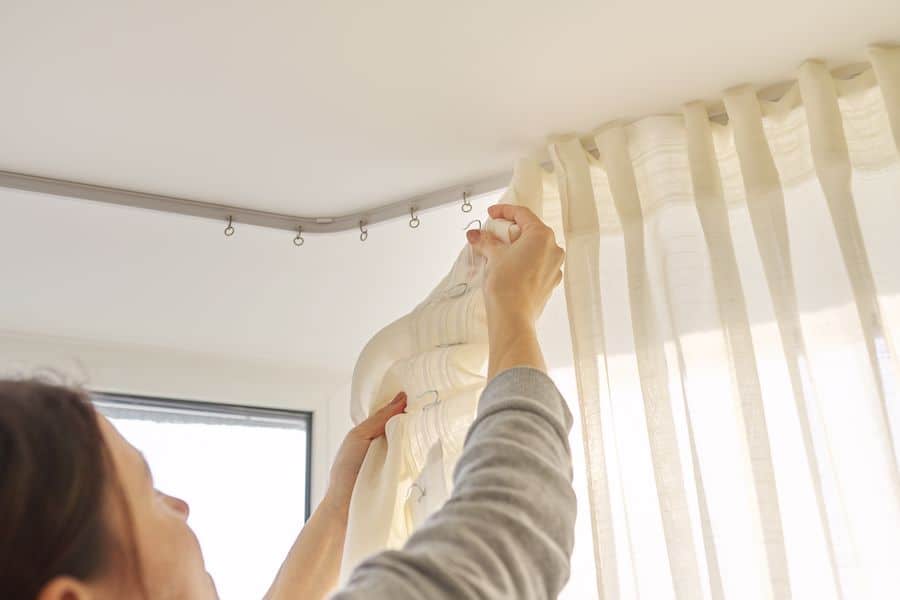Researching curtain rods for your home can take you down rabbit holes that teach you a lot about how your interior design choices impact the look of your space. If you’re trying to learn about flat curtain rods, you’re in the right place.
So, what are flat curtain rods called?
Table Of Contents
What Are Flat Curtain Rods Called?
Flat curtain rods are called continental curtain rods or dauphine rods. These curtain rods are flat-faced rods that support heavy-pleated draperies and valance curtains having rod pockets. These are typically between 2 ½ to 4 ½ inches wide and are sometimes curved to fit bay windows. Flat curtain rods are concealed under the fabric and emphasize the drapes.
Continental rods are available in metal and plastic and can be used on both curved and bay windows. Unlike French curtain rods, these curtain rods are not decorative by themselves and are typically hidden in the valances or drapes.
Three Ways to Use Flat Curtain Rods
You can use continental rods in four different ways:

#1 Heavy Drapes
Using a continental rod is an excellent idea if you want to hang up unpleated drapes in your windows. First, create a rod pocket half an inch larger than the rod’s width. This will give the curtains a shirred look on the top.
You could also ruffle the top of the curtains by putting the rod pocket between two and four inches from the top. All you have to do is thread the rod through the lower pocket. Make sure to check over time, as curtains tend to lengthen over time after they are hung.
#2 Balloon Valance
You can easily create a balloon valance by positioning a continental rod up front and a regular rod behind it. Stitch a wide rod pocket on one end of the fabric and sew a smaller one on the other end.
Put the fabric through the rod and stuff the valance with balled-up paper for a poufed effect. Stretch the curtain fabric around the rod’s side edges and even out the gathers to finish the look.
#3 Flip Valance
Putting together a flip valance is also an excellent idea if you have flat curtain rods. To do this, use two different coordinating fabrics. These are typically between two and three times longer than the window’s width.
One fabric should be in the front and the other used as lining in the back. Sew the two together, and the valance is ready to thread through the rod. After you do that, stretch the back fabric to the front roughly every six inches. This will result in a striking or subtle effect depending on the fabrics you use.
Conclusion
Installing flat curtain rods, which are also called dauphine or continental curtain rods, is an excellent idea if you don’t want there to be a visible curtain rod. Flat curtain rods typically remain hidden behind the drapes or valances that are hung on them, so you don’t have to worry about matching them with your light fixtures.

